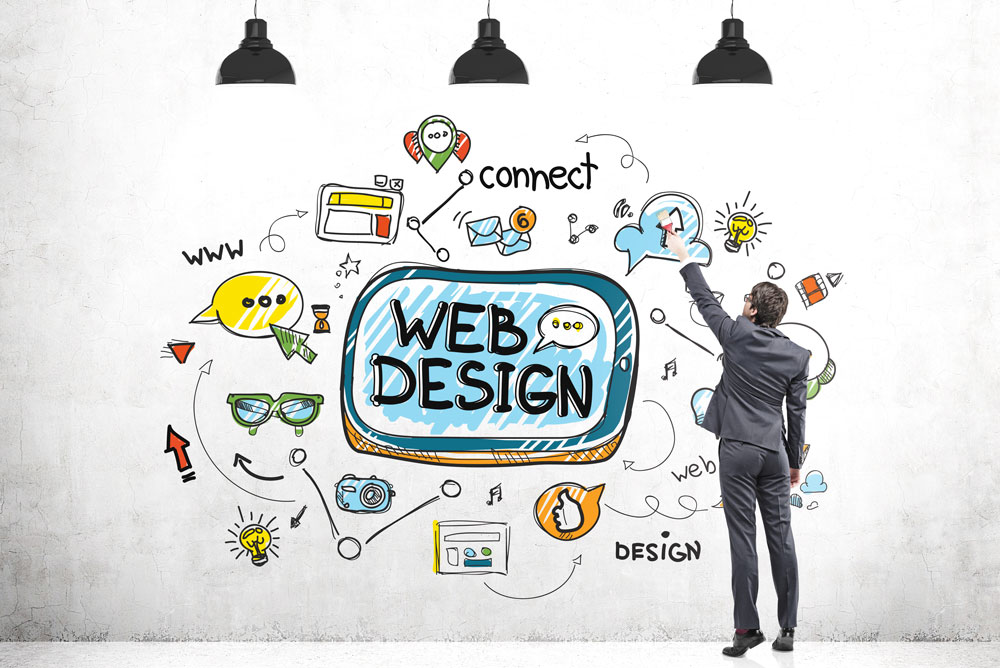Cost Effective and Innovative Solutions from a Leading Web Design Agency
Cost Effective and Innovative Solutions from a Leading Web Design Agency
Blog Article
A Comprehensive Guide to Ideal Practices in Internet Style for Boosted Customer Experience
In the world of internet style, comprehending user needs is critical for developing efficient electronic experiences. A well-structured strategy that highlights receptive style, intuitive navigation, and a strong aesthetic power structure can dramatically enhance customer involvement.
Understanding User Demands
Recognizing individual needs is basic to effective website design, as it directly influences individual experience and involvement. A comprehensive understanding of target market allows developers to create web sites that reverberate with individuals, promoting a feeling of connection and satisfaction (Web design agency). To attain this, designers must engage in user study, making use of techniques such as surveys, meetings, and functionality testing. This data collection provides insights into customer preferences, behaviors, and discomfort points.

Significance of Responsive Design
Responsive layout is essential in today's digital landscape, where customers access web sites across a myriad of devices with differing screen dimensions. As mobile phone use continues to rise, making certain that a website supplies an ideal viewing experience on mobile phones, tablet computers, and desktop computers is important. A responsive design adapts the layout and material based on the user's tool, enabling smooth navigation and readability.
In addition, responsive design substantially influences search engine optimization (SEARCH ENGINE OPTIMIZATION) Internet search engine, such as Google, focus on mobile-friendly sites in their ranking algorithms. A receptive web site can boost presence, leading to increased traffic and user involvement. Additionally, a constant user experience across gadgets builds brand name trustworthiness and fosters individual loyalty.
Moreover, applying responsive layout can cause lowered development and maintenance costs. Rather of producing several variations of a web site for numerous gadgets, a solitary receptive website streamlines updates and content administration. This effectiveness not only conserves time yet likewise guarantees that users receive the most existing details despite just how they access the website.
Simplifying Navigation

To achieve streamlined navigation, internet designers ought to focus on a sensible hierarchy of material. Utilizing detailed tags for menu things can aid customers comprehend the objective of each section at a glimpse. Additionally, lessening the number of menu products lowers cognitive load, enabling individuals to concentrate on the most important elements of the website.
Including a search function is likewise helpful, as it gives individuals with a direct course to particular web content. In addition, making sure that navigation components are regular throughout the website cultivates experience and simplicity of usage. Receptive style concepts must additionally be put on navigating menus, guaranteeing they operate efficiently throughout all gadgets. Inevitably, streamlined navigation not only boosts user contentment however additionally adds to accomplishing wider service goals by boosting conversion rates and lowering bounce rates.
Enhancing Aesthetic Power Structure
Just how can designers develop an aesthetic hierarchy that overviews individuals with web content flawlessly? The answer lies in the tactical usage of style aspects that route attention and facilitate comprehension.
Furthermore, the reference use of whitespace is important in producing breathing area around web content. This not only avoids overwhelming the user but also emphasizes important aspects, making them stand out. Typography additionally plays a significant function; employing varying font style weights and styles can set apart between key and additional info effectively.
Along with these strategies, visual cues such as arrows or symbols can assist individuals through the user interface, reinforcing the intended flow of information. By thoughtfully incorporating these components, designers can develop an engaging visual power structure that boosts user experience, making certain that important material is quickly available and comprehended. This cautious orchestration of design components inevitably promotes an extra user-friendly communication with the internet site.
Optimizing Page Tons Rate
In the fast-paced electronic landscape, optimizing web page lots speed has actually come to be my sources a critical variable in customer contentment and retention. Study suggests that individuals expect web pages to fill within 2 secs; any kind of hold-up past this threshold can lead to raised bounce prices and reduced conversion opportunities.
To improve load rate, beginning by reducing HTTP demands, as each request includes to the packing time. Make use of strategies such as CSS sprites to incorporate numerous pictures into one, lowering the number of demands. Enhancing images with compression and the usage of contemporary styles like WebP can considerably lower documents dimensions without endangering high quality.
Carrying out browser caching also plays a vital duty in enhancing page rate. go now By storing frequently accessed documents in your area on an individual's device, succeeding sees can pack nearly instantaneously. Additionally, take into consideration leveraging Material Delivery Networks (CDNs) to distribute content closer to users, decreasing latency.
Conclusion
In conclusion, reliable internet layout focuses on customer requirements with precise study, promoting instinctive and responsive interfaces. Eventually, a dedication to these concepts is crucial for establishing successful digital experiences that satisfy the progressing assumptions of customers in a competitive on the internet landscape.
Report this page